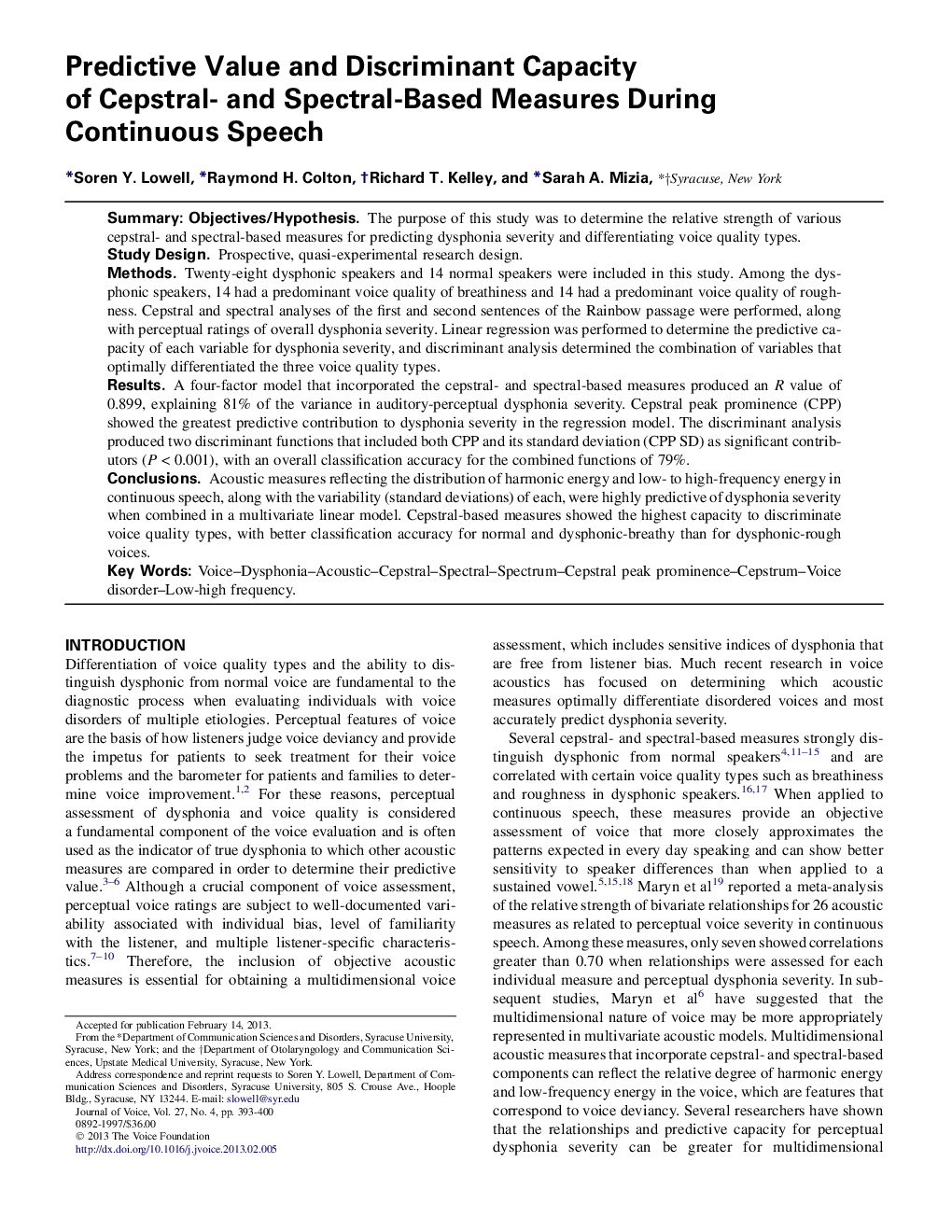| کد مقاله | کد نشریه | سال انتشار | مقاله انگلیسی | نسخه تمام متن |
|---|---|---|---|---|
| 1102102 | 953588 | 2013 | 8 صفحه PDF | دانلود رایگان |

SummaryObjectives/HypothesisThe purpose of this study was to determine the relative strength of various cepstral- and spectral-based measures for predicting dysphonia severity and differentiating voice quality types.Study DesignProspective, quasi-experimental research design.MethodsTwenty-eight dysphonic speakers and 14 normal speakers were included in this study. Among the dysphonic speakers, 14 had a predominant voice quality of breathiness and 14 had a predominant voice quality of roughness. Cepstral and spectral analyses of the first and second sentences of the Rainbow passage were performed, along with perceptual ratings of overall dysphonia severity. Linear regression was performed to determine the predictive capacity of each variable for dysphonia severity, and discriminant analysis determined the combination of variables that optimally differentiated the three voice quality types.ResultsA four-factor model that incorporated the cepstral- and spectral-based measures produced an R value of 0.899, explaining 81% of the variance in auditory-perceptual dysphonia severity. Cepstral peak prominence (CPP) showed the greatest predictive contribution to dysphonia severity in the regression model. The discriminant analysis produced two discriminant functions that included both CPP and its standard deviation (CPP SD) as significant contributors (P < 0.001), with an overall classification accuracy for the combined functions of 79%.ConclusionsAcoustic measures reflecting the distribution of harmonic energy and low- to high-frequency energy in continuous speech, along with the variability (standard deviations) of each, were highly predictive of dysphonia severity when combined in a multivariate linear model. Cepstral-based measures showed the highest capacity to discriminate voice quality types, with better classification accuracy for normal and dysphonic-breathy than for dysphonic-rough voices.
Journal: Journal of Voice - Volume 27, Issue 4, July 2013, Pages 393–400